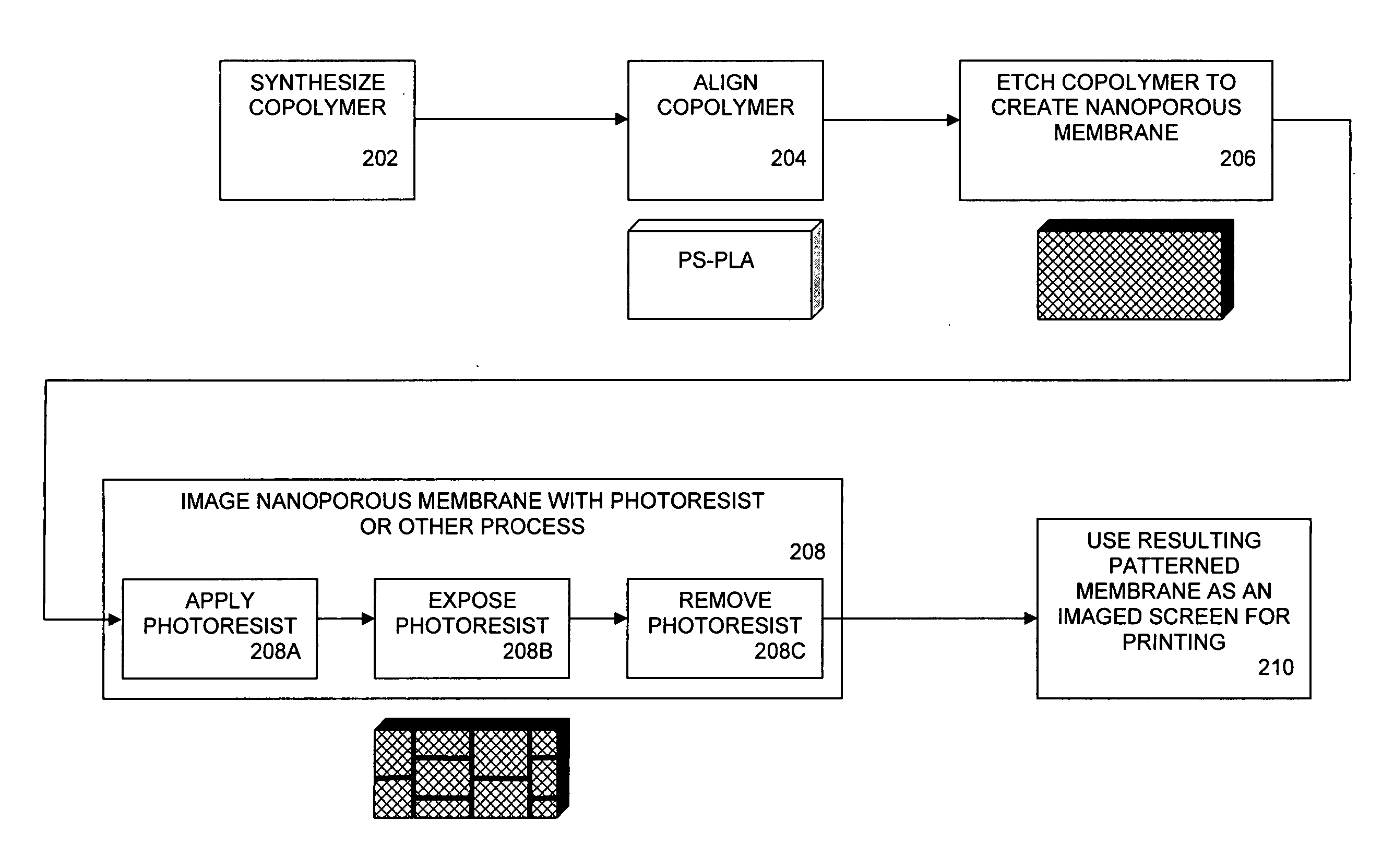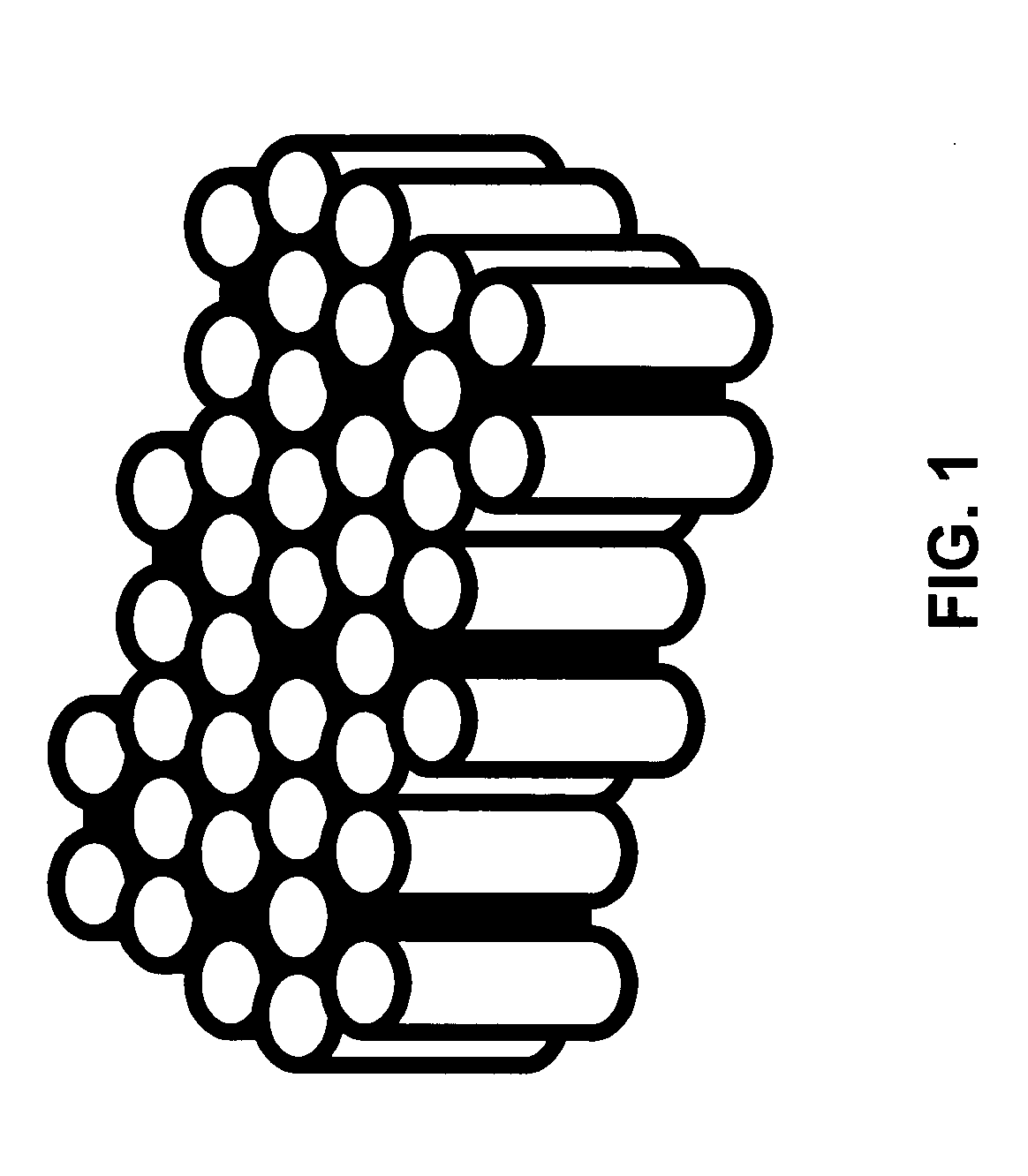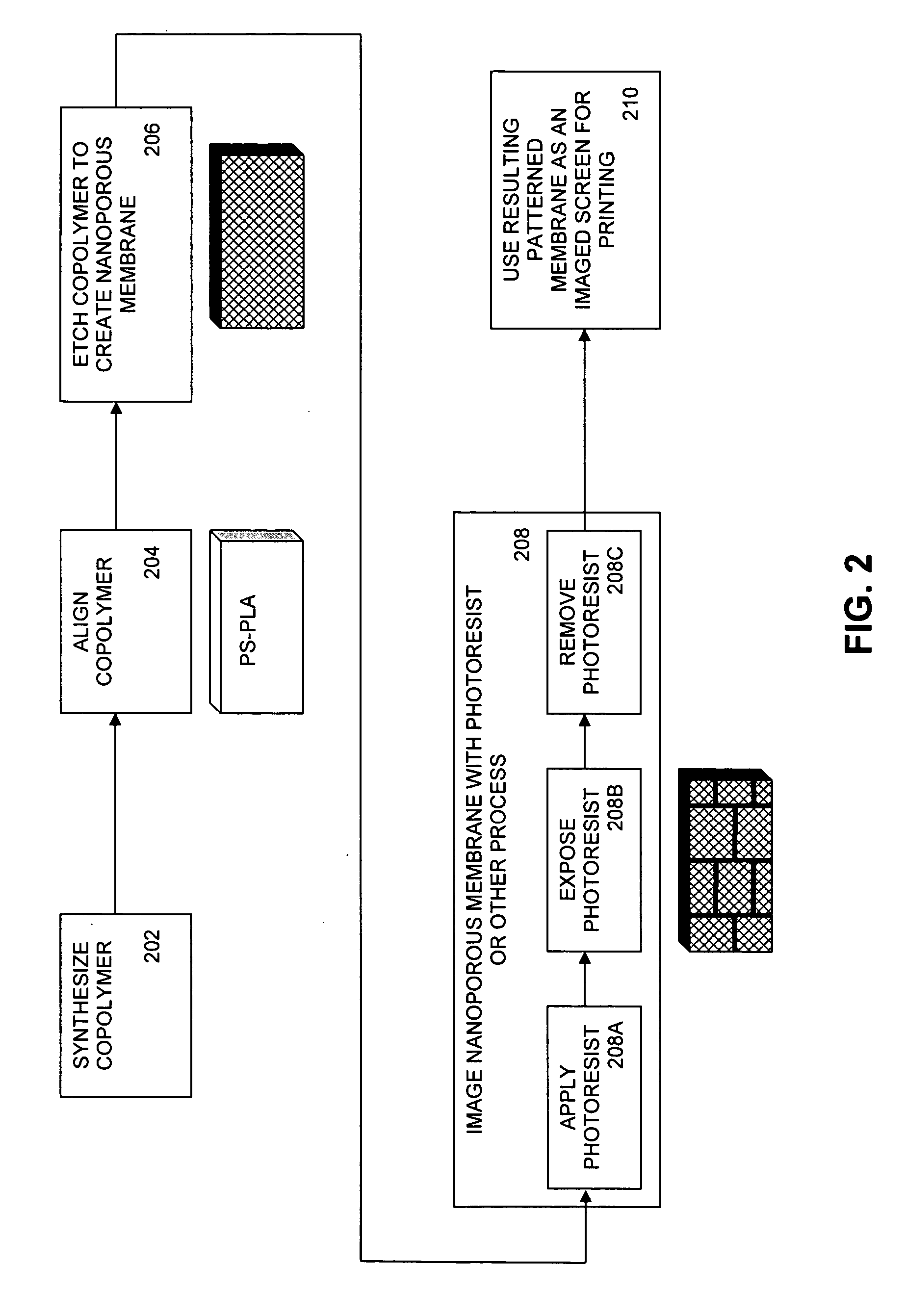Screen printing using nanoporous polymeric membranes and conductive inks
a nanoporous polymer membrane and conductive ink technology, applied in the field of screen printing, can solve the problems of non-standard edges, undesirable varying widths, and low screen printing efficiency, and achieve the effects of reducing the pore size of the screen, widening the application of printing, and high resolution
- Summary
- Abstract
- Description
- Claims
- Application Information
AI Technical Summary
Benefits of technology
Problems solved by technology
Method used
Image
Examples
Embodiment Construction
[0016] Electrical components manufactured by additive printing processes require high resolution printing techniques. High resolution printed images and articles are often difficult to achieve with commercial printing techniques, such as screen printing. The novel combination of nanoporous polymeric membrane technology with conductive inks having small particle size results in the ability to screen print electrical components with adequate resolution. The invention thereby enables screen printing with resolutions of less than about 200 microns, preferably about 25 microns or less, in various embodiments.
[0017] In one embodiment, the method of the invention includes creating a porous membrane through a chemical process. The membrane is then patterned and pores are etched according to a desired pattern. The membrane may then be used to pattern conductive traces on a substrate according to a screen printing or other suitable printing technique.
[0018] New materials are emerging, drive...
PUM
| Property | Measurement | Unit |
|---|---|---|
| diameter | aaaaa | aaaaa |
| diameter | aaaaa | aaaaa |
| width | aaaaa | aaaaa |
Abstract
Description
Claims
Application Information
 Login to View More
Login to View More - R&D
- Intellectual Property
- Life Sciences
- Materials
- Tech Scout
- Unparalleled Data Quality
- Higher Quality Content
- 60% Fewer Hallucinations
Browse by: Latest US Patents, China's latest patents, Technical Efficacy Thesaurus, Application Domain, Technology Topic, Popular Technical Reports.
© 2025 PatSnap. All rights reserved.Legal|Privacy policy|Modern Slavery Act Transparency Statement|Sitemap|About US| Contact US: help@patsnap.com



